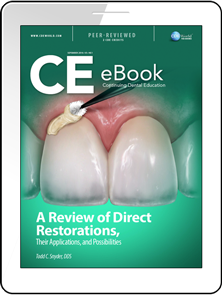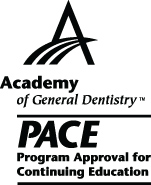CDEWorld > eBooks > A Review of Direct Restorations, Their Applications, and Possibilities


ADA CERP is a service of the American Dental Association to assist dental professionals in identifying quality providers of continuing dental education. ADA CERP does not approve or endorse individual courses or instructors, nor does it imply acceptance of credit house by boards of dentistry. Concerns or complaints about a CE provider may be directed to the provider or to ADA CERP at www.ada.org/cerp/

Approved PACE Program Provider. FAGD/MAGD credit. Approval does not imply acceptance by a state or provincial board of dentistry, or AGD endorsement. 1/1/2023 to 12/31/2028. ID # 209722.
eBook
Released: Wednesday, September 14, 2016
Expires: Saturday, August 31, 2019
A Review of Direct Restorations, Their Applications, and Possibilities
By Todd Snyder, DDS
Commercial Supporter: VOCO America
Growing esthetic demands from patients and disproportional fear over mercury in amalgam fillings over the past 70 years has led to a significant increase in the use of composite resin for both anterior and posterior restorations. One of the best attributes of composite resins that practitioners could truly embrace was that they required little to no preparation, allowing for minimally invasive procedures that would preserve tooth structure and offer natural-looking results to their patients. This article will review the class of direct composite materials, including indications for their clinical application.
LEARNING OBJECTIVES:
-
Review the history and evolution of tooth-colored direct restorative materials
-
Identify the characteristics of microfilled resins, hybrid composites, and nanofilled composites
-
Describe the appropriate clinical applications for each of the materials discussed
-
Discuss the future development possibilities for direct restoratives
About the Author
Todd C. Snyder, DDS
Dr. Snyder has been on the faculty at University of California Los Angeles in the Center for Esthetic Dentistry and is currently on the faculty at Esthetic Professionals, Tarzana, California.


